
The Sugar Skull Bakers is a collaboration of cookie, sugar, cake decorators, and artists from around the world honoring the 3,500 year old Mexican holiday – Dia de los Muertos (aka The Day of the Dead).
The group, founded in 2013, by cake artist Berenice “Berry” Rabago, of Berry’s Sweet Studio and graphic artist Yuki Navarro, is comprised of artists who work with edible mediums. Their skills and expertise range from hobbyist to professional. Some have competed worldwide and have even appeared on National American television network programs such as Sugar Dome, Cake Wars, and more.
The Sugar Skull Bakers may also be found on Facebook, Twitter, and Instagram.
This week, Between the Pages will be featuring many of these gorgeous creations.
This post spotlights an amazing Aztec Day Of The Dead Headpiece that was made by Ana Mourinho Remigio from CUPCAKES & DREAMS.
Here is Ana’s description of this stunning piece:
I love to study about these amazing cultures and find links between the old civilizations and the modern cultures. This year I did a Day of the Dead celebration with quetzal plumage and rose and dahlia flowers. A nod to the Mexican (Aztec) god, Huitzilopochtli. It was believed that fallen warriors after forming part of the sun’s bright hues, would return as hummingbirds forever. I thought they would add to the composition a beautiful touch and make great observers and guardians for this sugar celebration.
As you will see in the pictures below, this is an extremely beautiful and elaborately detailed piece.
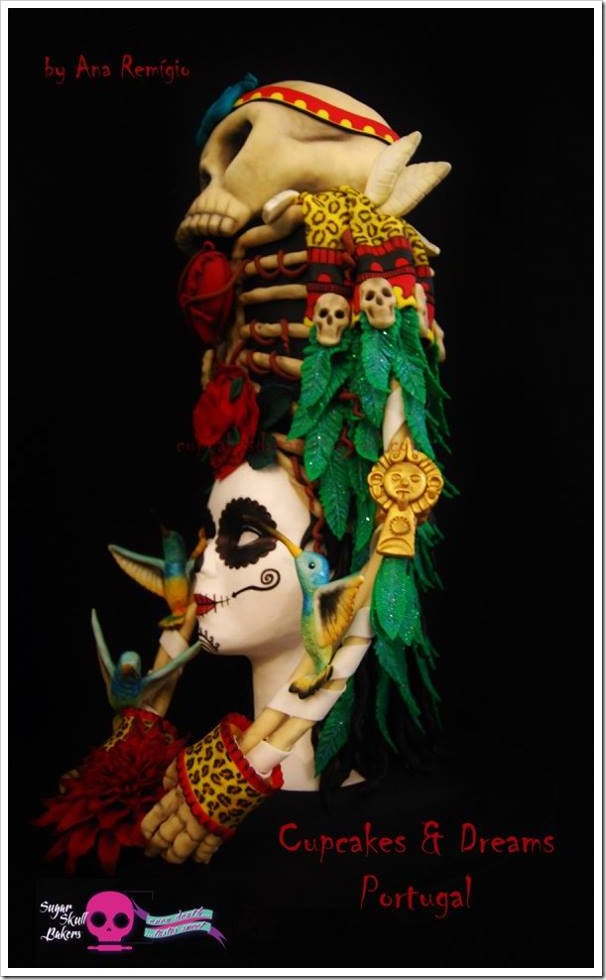
The left side

The right side

The headpiece has three parts. The top is a skull which is also wearing a headband. The center is the chest with a heart. The chest rests on the wearer’s head. The side and bottom of the headpiece are two arms that wrap around the wearer. There is a flower (a rose) where the headrest touches the wearer and there is a different flower (a dahlia) where the skeleton hands join. There is Jaguar print at the top of the shoulders and at the wrists. There are humming birds on both sides of the headpiece. The same gold icon hangs off the blue-green feathers of the Quetzal bird on both sides.
The size of the headpiece, the use of the blue-green feathers of the Quetzal bird, and the gold icons on the side indicate that this headpiece would have been worn by Aztec nobility.

Notice the band on the skull. The centerpiece looks like a blue double headed serpent. This is based on a famous Aztec turquoise sculpture in the British Museum. This sculpture was featured in A History of the World in 100 Objects.
Why a double headed serpent? Wikipedia speculates:
There were a number of reasons why the serpent may have been chosen as the subject of this sculpture. It has been proposed that the serpent was a symbol of rebirth because of its ability to shed its old skin and appear as a reborn snake. The snake features strongly in the gods that the people worshiped. The feathered serpent god Quetzalcoatl was important to their religion, but other gods also had serpentine characteristics.

Notice the Jaguar print on the cloth hanging over the sides. The Jaguar was one of the symbols for Tezcatlipoca, the central Aztec deity. There was even a class of Aztec warriors know as the Jaguar Warriors.
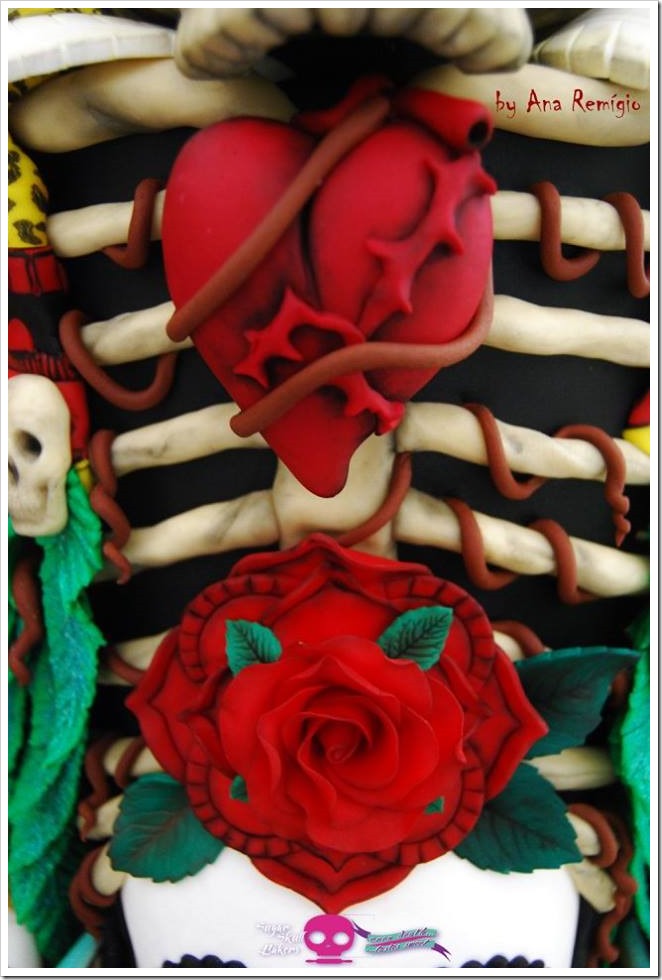
The center of the headpiece is a heart and a rose.
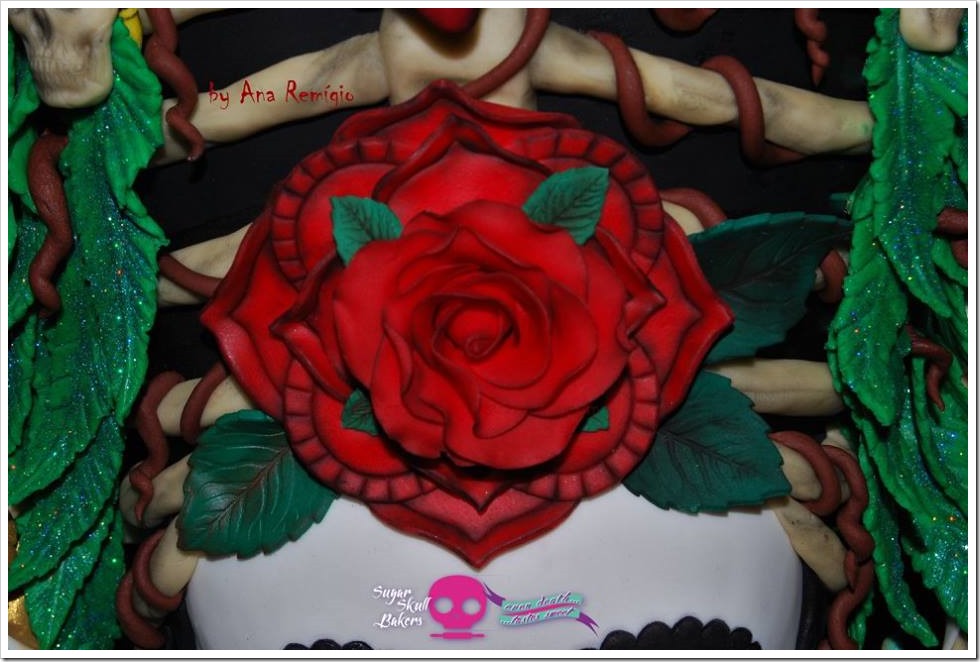

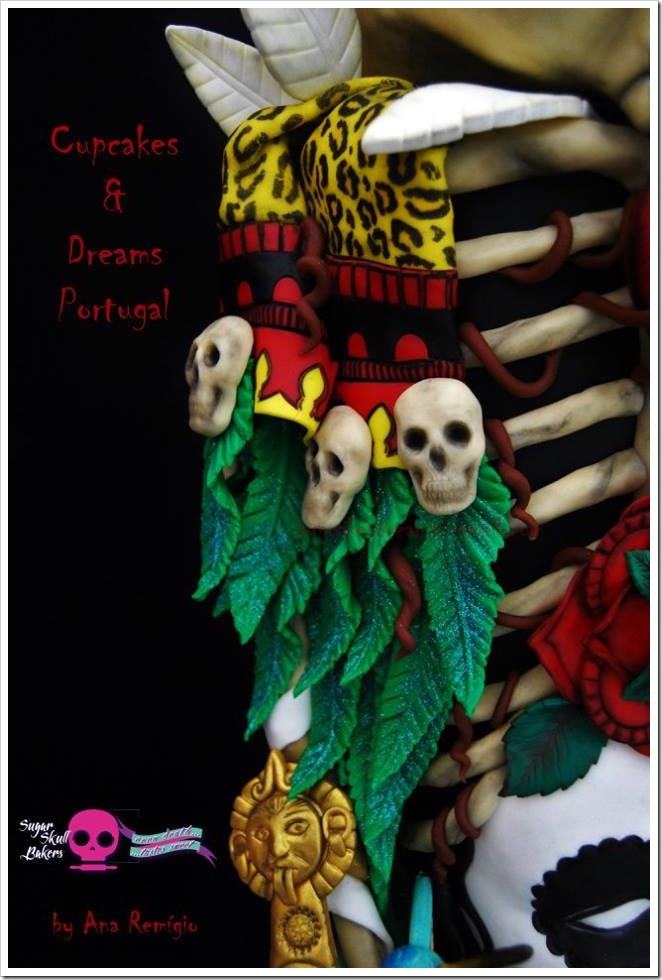
Here is a close-up on the right side of the headpiece.
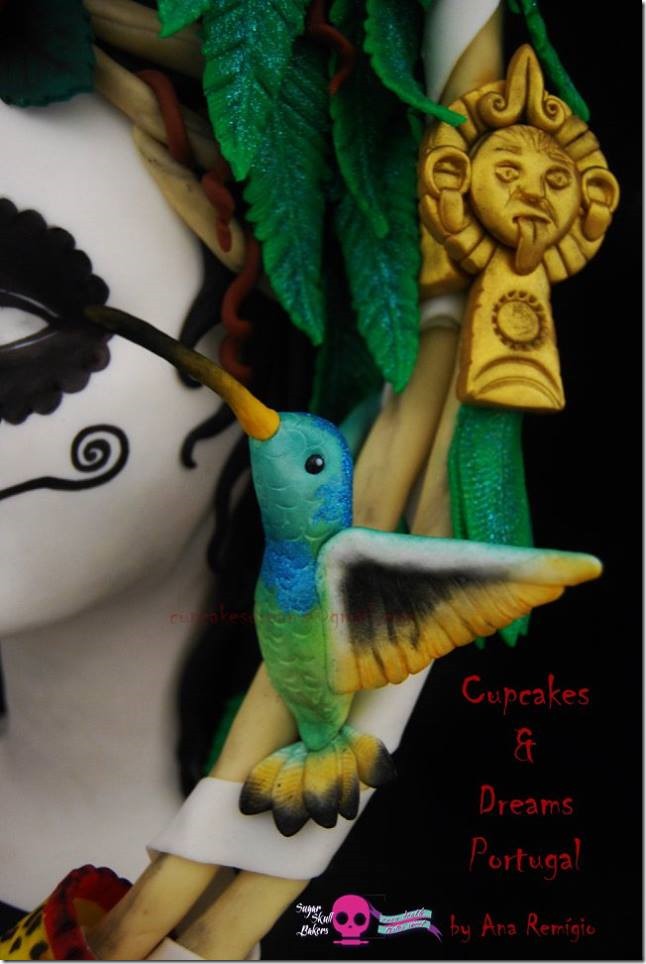
Here is a close-up on the left side of the headpiece.
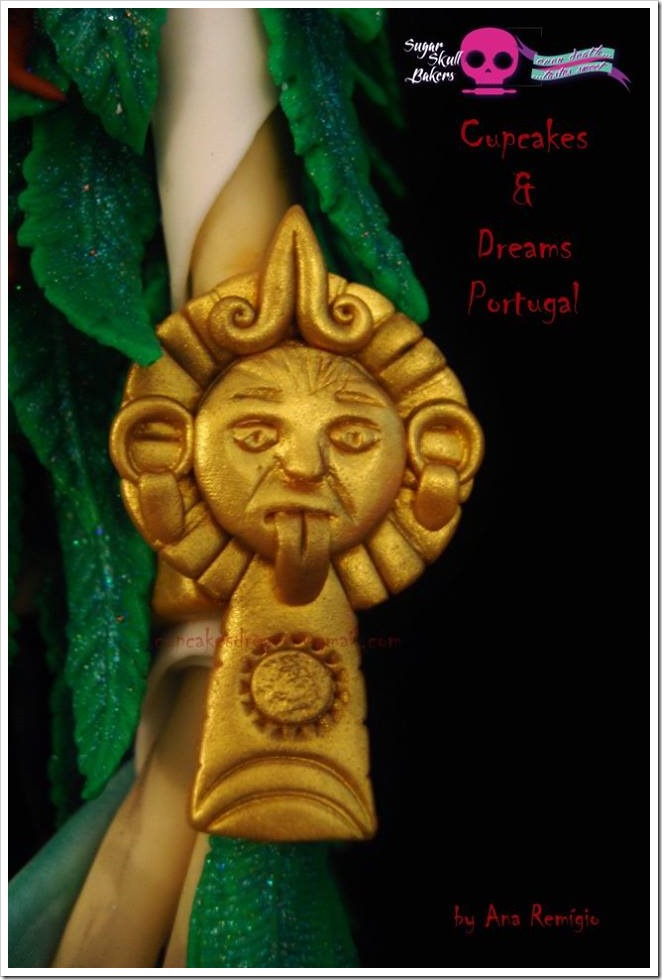
The gold icon is Huitzilopochtli, the Aztec Sun God. He was the primary god of war in Aztec culture.

These are the feathers of the Quetzal bird. Feathers were important part of Aztec clothing and tied into their religion. The Aztec God Quetzalcoatl was a feathered serpent. Huitzilopochtli, The Aztec God of War, was also the God of the featherworkers.


The skeleton hands are holding a dahlia.

Ana said that it was believed that fallen warriors after forming part of the sun’s bright hues, would return as hummingbirds forever. She added them because she thought they would add to the composition a beautiful touch and make great observers and guardians for this sugar celebration.
While researching this piece, I found out something really cool about the hummingbirds. Remember Huitzilopochtli? He is the Aztec Sun God, the primary god of war, and the god of the featherworkers. From Wikipedia, if you look at the etymology of the name Huitzilopochtli,
…it means something like “Hummingbird(‘s) South” or “Hummingbird(‘s) Left”, yet it has commonly been translated as “Southern hummingbird” or “left-handed hummingbird”.

Here is the back side of the headdress. Like the rest of this piece, the detail is amazing. It boggles my mind that everything you see is edible.




